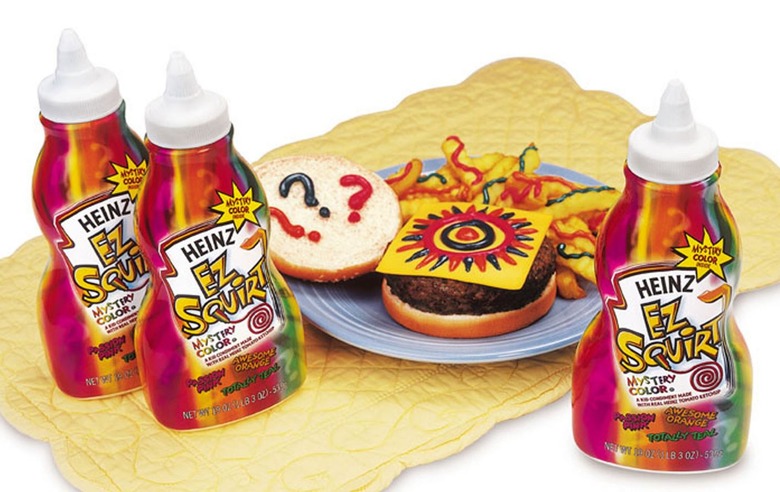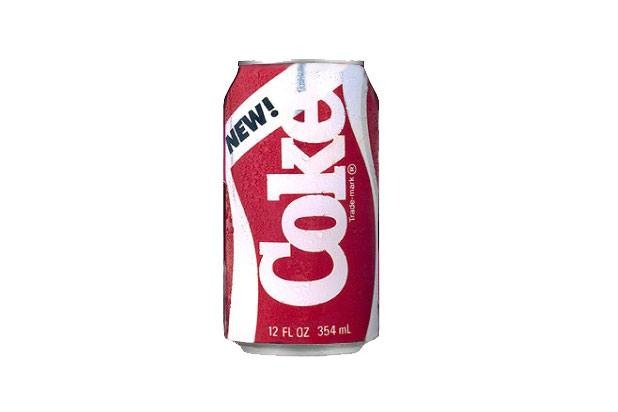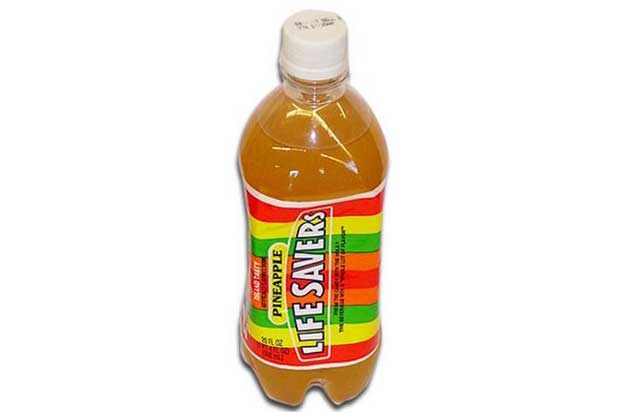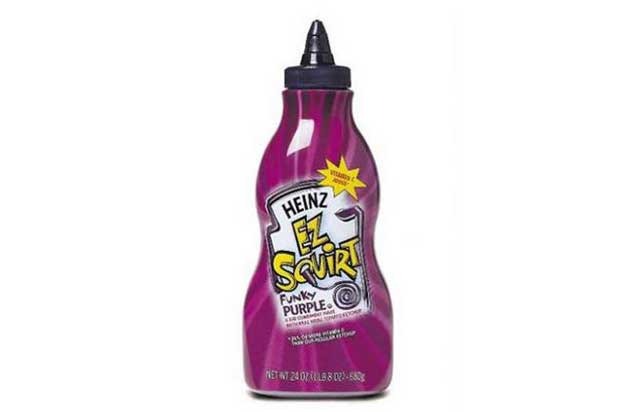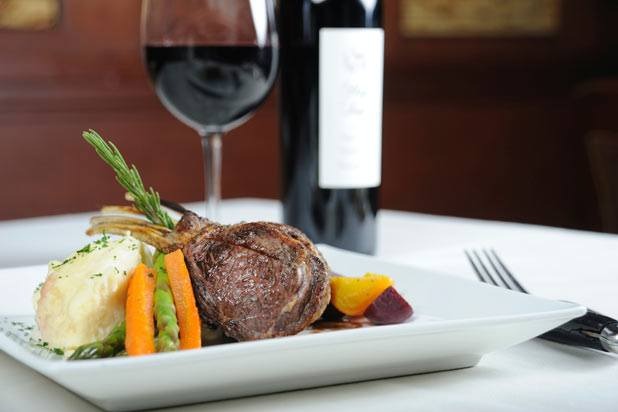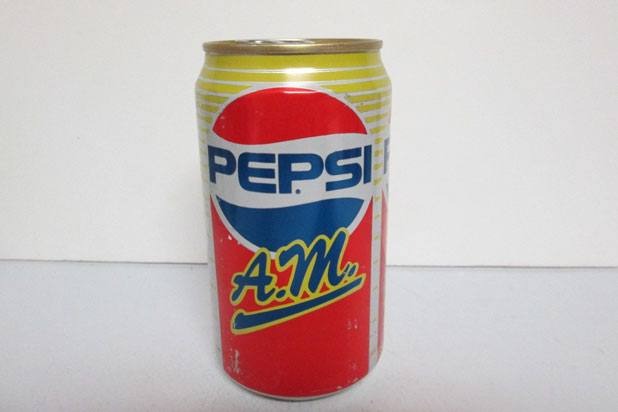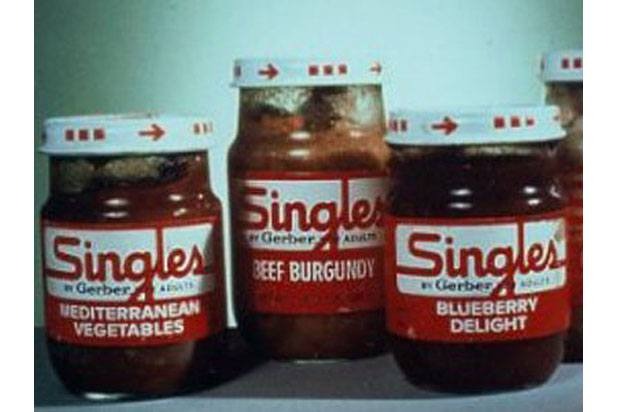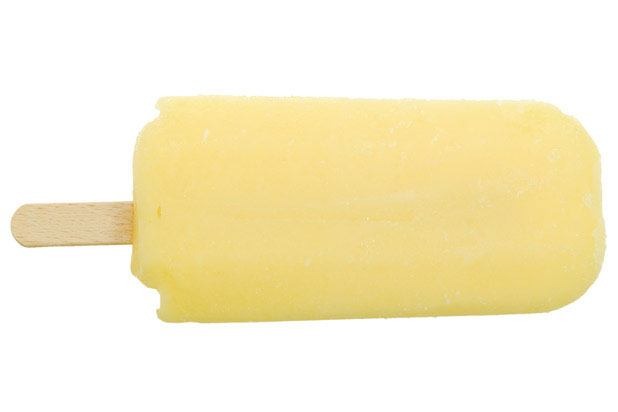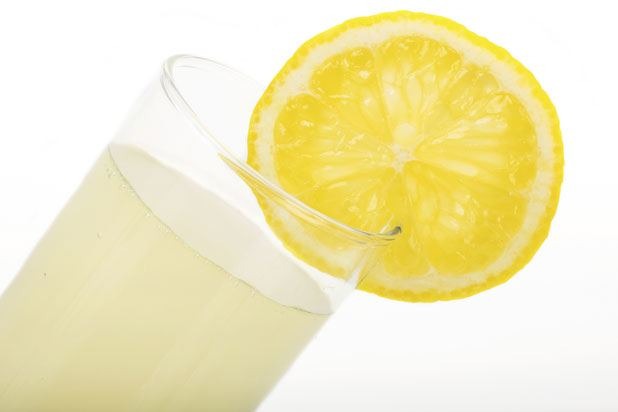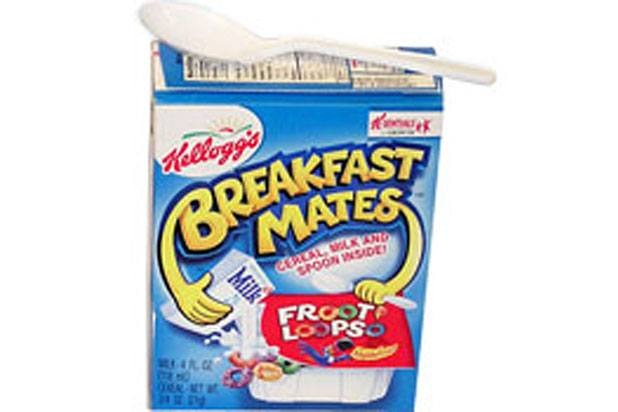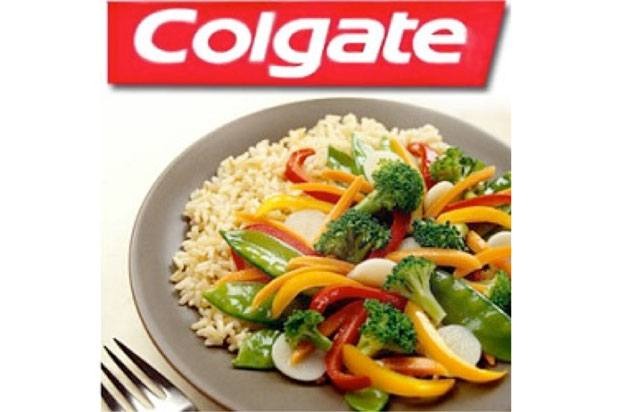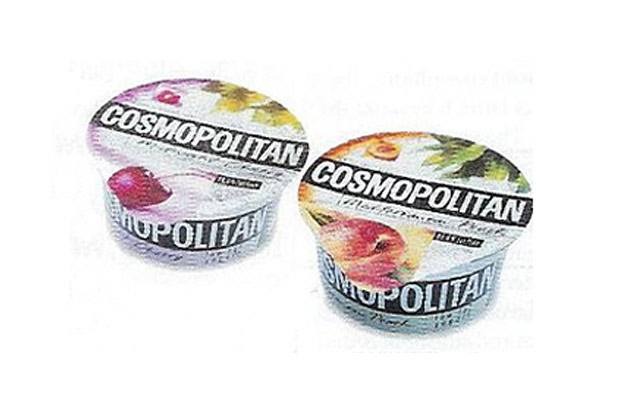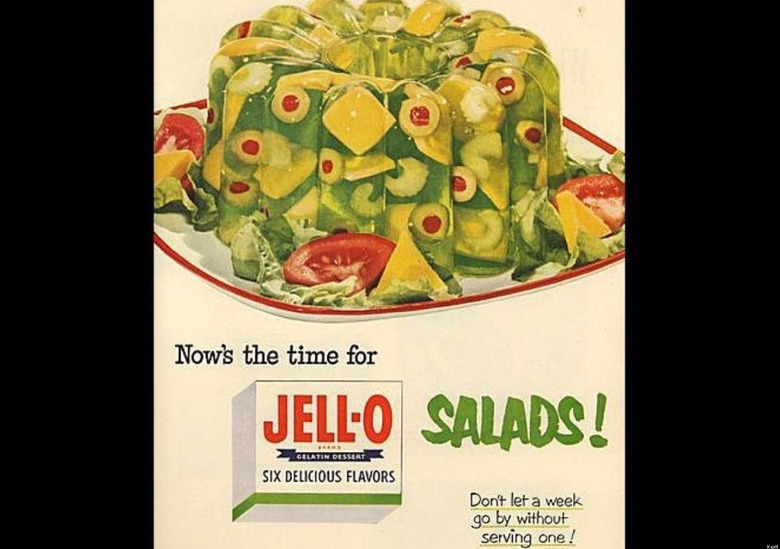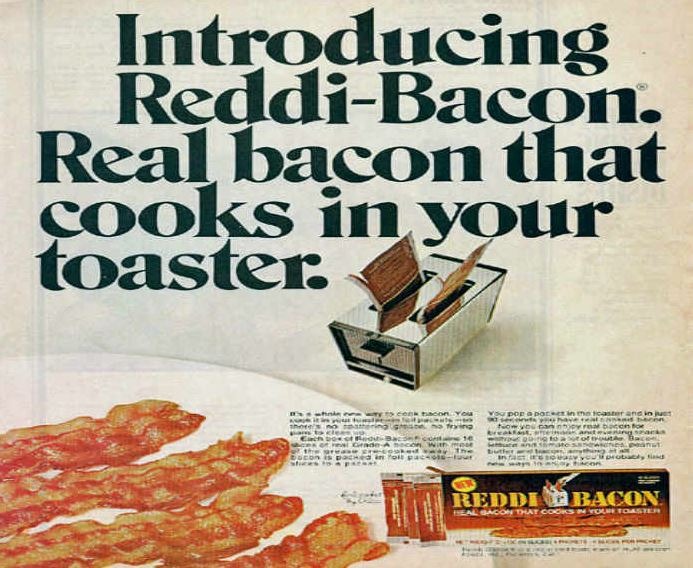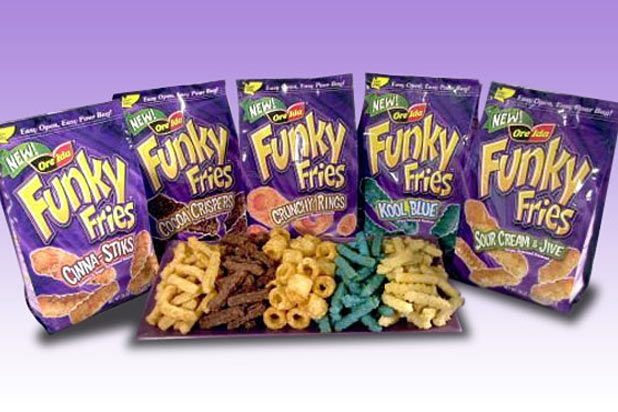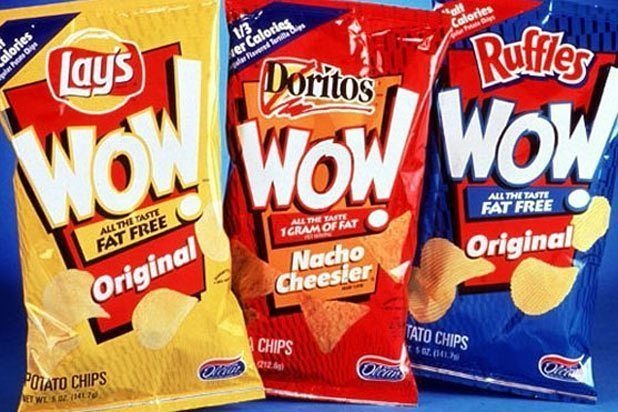New Coke, Colgate Lasagna, And 15 Other Food Products That Failed Miserably Slideshow
When we go to the supermarket, we have certain expectations of the products that we'll see there. For example, ketchup will be red, not purple. Jell-O will not be celery-flavored. Life Savers will be little round candies, not soda. When these expectations are turned on their heads, not only is there a bit of cognitive dissonance, it's just bizarre. And it's not until the shock wears off that we actually ask ourselves, "Why would anyone possibly want to buy this?" We've tracked down 16 times when new product launches failed miserably.
New Coke
Quite possibly the most infamous product release of all time, New Coke has become synonymous with epic failure. Introduced in 1985 as a completely reformulated Coca-Cola after extensive market research and testing, the company was convinced that Americans would take to it immediately. The backlash was fiercer than they ever could have imagined, however, as consumers had a strong emotional attachment to the original formula, and it turned out to be a marketing disaster. The original formula was back on the shelves three months later, and (amazingly) New Coke, which was re-christened Coke II, stuck around until 2002.
Life Savers Soda
In the sugar-sweet 1980s, Life Savers set out to create a line of sodas with flavors that resembled those of their classic flavor lineup: lime, grape, orange, pineapple, and fruit punch. The drinks tested well and were expected to join the ranks of other popular sodas at the time, but they simply didn't. The main reason: The name made consumers think that they'd be drinking liquid candy, and while that might be a kid's dream, it didn't resonate much with the parents.
Heinz EZ Squirt
The reputable E.J. Heinz company stooped to what might be an all-time low in 2000, when they introduced a new ketchup, one that tasted just like the original but was a sickly shade of green. The stuff actually sold well at the time, and purple and blue ketchup soon followed. But the novelty quickly wore off as kids realized that blue ketchup just wasn't super-cool, especially if you were just trying to put a condiment on a burger. By 2006, purple ketchup was all but a memory.
Heublein’s Wine & Dine
Heublein was a popular producer and distributor of alcoholic beverages, and is widely credited with helping popularize Smirnoff. They also sold a wide variety of premade cocktails, including "Malcolm Hereford's Cow," a milk-based drink that was a big fad in the '70s, and even briefly owned KFC during that decade. But they might have stretched things a little too far with Heublein's Wine & Dine, released as an upscale Hamburger Helper in the mid-'70s. For the unsuspecting consumer, it looked like an easy dinner for two: some pasta, a sauce mix, and a small bottle of wine. You boil the pasta, toss it with the sauce mix and some chopped beef, plate it up, dim the lights, and take a sip of the wine... only to discover that it's been salted and seasoned, and was supposed to be mixed in with the pasta! The packaging did very little to communicate this fact, and Heublein's Wine & Dine soon died a sad, hilarious death.
Pepsi AM
Studies showed that coffee consumption was down in the late 80s, so in 1989 the always on-trend Pepsi decided to attempt to fill a hole in the market by introducing Pepsi AM, which contained 28 percent more caffeine. Sales were down from day one, largely because of marketing: consumers weren't particularly interested in starting their day with a Pepsi, and the product's name indicated that it was only supposed to be drunk in the morning. If they'd just waited until 1999 and introduced it as Pepsi X-TREME, they might have had a hit on their hands!
Gerber Singles
Possibly the most embarrassing and head-scratchingly awful food product release of all time, Gerber Singles were a disaster from top to bottom. Just look at these things! Baby food jars, filled with busted-looking food mush, intended as a meal for one. One adult. Sure, most of us have tried baby food at some point in our adult lives and realized that it tastes fine, but who in their right mind would buy a single-serving of adult-oriented baby food (one depressingly called "Singles" at that), and be comfortable sitting in front of their TV, eating it out of the jar with a little spoon? Released in 1974 and geared toward those hip young college students and people who were living alone for the first time, the baby food for adults, which came in flavors like Creamed Beef, Beef Burgundy, Chicken Madeira, Beef with Mushroom Gravy, Mediterranean Vegetables, and Blueberry Delight, was laughed off the shelves.
Chiquita Frozen Juice Bars
When you think of "Chiquita," what's the first word that comes to mind? Bananas, most likely, and Chiquita hates that. They've been trying for years to extend their brand beyond bananas, and fresh fruit in general. In 1987, they sunk more than $30 million, according to Business Week, into their first major new product, frozen juice bars. It completely tanked, and the company went crawling back to their banana trees, heads hung in shame.
Frito-Lay Lemonade
It would appear to make perfect sense: you're eating a salty snack made by Frito-Lay, and you get thirsty. Why not reach for a thirst-quenching lemonade, also made by Frito-Lay? Unfortunately for the company, consumers associate Frito-Lay with potato chips, not beverages. Stocked alongside more popular lemonade producers, there was also nothing to separate it from the pack. Sales were dismal, and it vanished from shelves as quickly as it arrived.
Campbell’s Souper Combos
Who doesn't love a soup and sandwich? In the early 80s, Campbell's decided to test out a microwavable soup/ sandwich combo in varieties like tomato soup with grilled cheese, vegetable soup and a hot dog or cheeseburger, clam chowder with a fish sandwich, and chicken noodle soup with a ham and cheese. It developed a legion of fans (mostly kids), but a complicated multi-step heating process created lots of one-time buyers. As soon as consumers realized that it was quicker and easier to just open a can of soup and make themselves a sandwich, the product was discontinued.
Kellogg’s Breakfast Mates
In 1998 Kellogg's had an idea: Why take the time to pour a bowl of cereal, walk over to the fridge, grab the milk, pour said milk over the cereal, then put the milk away and get a spoon before eating? Why not just package a single serving of cereal together with a spoon and a single serving of shelf-stable milk, so everything is right there in one place? A few separate factors led to Breakfast Mates' downfall: One, even though the milk didn't need to be refrigerated, it was placed in the refrigerated dairy case instead of the cereal aisle so people wouldn't be grossed out by the warm milk. But nobody expected to see cereal in the dairy case, so no one thought to buy it. Two, it was marketed to parents who wanted to allow their children to prepare their own breakfast while they slept in, but kids had been making themselves bowls of cereal for years and the milk packet tended to spill all over the place when the children tried to open it. Three, even though the milk was safe, nobody really liked the thought of drinking warm milk. Four, the price, about $1.50, was a lot more expensive than a regular bowl of cereal. The product stuck around for two years before becoming a statistic.
Colgate Kitchen Entrees
We suppose the idea behind Colgate Kitchen Entrees was the fact that you'd eat the Colgate frozen dinner and then brush your teeth with Colgate toothpaste, but this one just simply didn't work. The frozen food market was already pretty saturated when these dinners were released in 1982, and when people think of Colgate they tend to think of clean teeth, not frozen lasagna and Swedish meatballs.
Cosmopolitan Yogurt
This one is more of a brand crossover than a brand extension, but it's still a very strange one. In 1999, the folks at Cosmopolitan magazine had an idea: they'd get into the food game. While it's unclear exactly what motivated them to release Cosmo-branded yogurt (women like Cosmo, women like yogurt, so women would like Cosmo yogurt, maybe?), there it was, on the shelves. And there it went, in the blink of an eye.
Cosmopolitan Yogurt
This one is more of a brand crossover than a brand extension, but it's still a very strange one. In 1999, the folks at Cosmopolitan magazine had an idea: they'd get into the food game. While it's unclear exactly what motivated them to release Cosmo-branded yogurt (women like Cosmo, women like yogurt, so women would like Cosmo yogurt, maybe?), there it was, on the shelves. And there it went, in the blink of an eye.
Jell-O for Salad
It might be tough to believe, but there was a time in American history when so many people were making Jell-O-based salads that the company felt compelled to release a product that was specifically intended to encase vegetables. Ads for celery-flavored Jell-O showed elaborate Bundt-style molds of green Jell-O, with everything from pecans to tomato wedges to olives, cucumber, tuna, and hard-boiled eggs suspended within. But it wasn't just celery though, the brand also released mixed vegetable, seasoned tomato, and Italian Jell-Os. Thankfully we've come far enough as a society that savory Jell-O is no longer a thing.
Reddi-Bacon
Back in those heady 1970s, everything was about convenience. Just look at Reddi-Whip. Why spend the time to whip your own cream when you could just shake a can and deposit it directly into your face? The bold individuals behind the now-ubiquitous can of whipped cream had an arguably just-as-brilliant idea a couple of years later — why not do the same thing, but for BACON? If they could figure out a way to speed the process of making bacon, they knew that'd have a winner on their hands, so they decided to invent a process that allowed you to make bacon in your toaster. All you had to do was pop a packet of the foil-wrapped processed meat into your toaster, wait a few minutes, and enjoy piping hot Reddi-Bacon. What could possibly go wrong? A lot of things, apparently: An absorbent pad in the packet intended to soak up the grease tended to leak inside the toaster, creating an obvious fire hazard as well as a greasy toaster. The product was pulled before being released nationally.
Funky Fries
For one brief, shining moment in 2002 and 2003, not only was it possible to eat fries with blue ketchup, it was possible to eat blue fries with blue ketchup. For some strange reason, Ore-Ida got it into their heads that kids really wanted to be able to eat blue French fries, as well as ones that came in flavors like cinnamon and chocolate. Even though millions of dollars were sunk into these new products, they completely tanked. You just don't mess with perfection.
Frito Lay’s WOW Chips
It sounded almost too good to be true: An alternative to oil, in which chips and other greasy snacks could be fried but would take on almost no fat and calories! When Frito-Lay rolled out a new line of WOW! chips that had been fried in the stuff, called olestra, in 1998, folks went crazy for it, until they realized that it had some, shall we say, unpleasant side effects, including abdominal cramping, diarrhea, and, yes, anal leakage. The Food and Drug Administration forced the company to plaster a warning label on all the products that contained the chemical, and sales immediately dropped off to near-zero. While the WOW! tag is long-gone, you can still find olestra in several of Frito-Lay's "Light" products, including Tostitos, Lay's, Ruffles, and Doritos.
